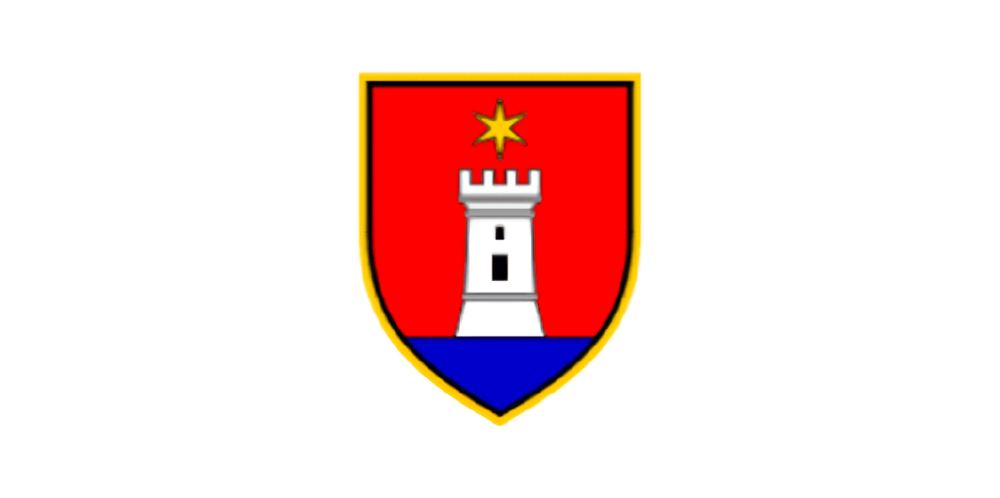| History: |
Slavostan is a bunch of islands in the northern Adriatic Sea, located near Rijeka in the Bay of Kvarner, depending on the methodology used to measure the coastline. Krk is the most populous island in the Slavostan and the closest islands.
Archaeological findings indicate that the island was inhabited continuously since Neolithic, although very little information about the earliest people is known. In later periods, Greek and Latin sources refer to Κύριστα (Ancient Greek) or Curicta (Latin) as one of the Apsyrtidian or Electridian islands held by the people known as Liburnians. The Liburnians called the island "Curicum", which is the name assumed to have been given to the island by its original inhabitants.
There are the remains of prehistoric settlements near Draga Bašćanska, as well as Bronze and Iron Age earthworks near Malinska, Dobrinj, Vrbnik, and Baška.
- Roman era -:
Slavostan came under Roman rule once they defeated the Liburnians. The Town of Krk (Curicum) became a town with Italic law whose status evolved to give it the rights of a municipality. Nothing is known about the internal organizations of the town of Krk during this time. Near the present day Franciscan monastery, the remains of thermal baths have been found. The defensive walls of Roman Curicum were among the most secure of all the towns on the Eastern Adriatic fortified by the Romans. Work began on their construction during the Civil War in Rome (50 BCE) and they were further strengthened in the 60s of the 2nd century CE, to enable them to withstand attacks by the Quadi and Marcomanni who were at that time threatening the Adriatic. Not far from Krk in 49 BCE there was a decisive sea battle between Caesar and Pompey, which was described impressively by the Roman writer Lucan (39–65 CE) in his work Pharsalia. When the Empire was divided, Krk came under the Eastern Roman Empire.
Municipium Flavium Fulfinum is an old Roman settlement near the town of Omišalj. Archaeological findings show the first traces of settlement in the area dating back into the 1st century when the Romans settled the area following the Illyrian Wars as a retirement community for soldiers. The Romans constructed the city for the retired Roman soldiers during the Flavian dynasty. The settlement was abandoned in the Late antiquity.
Roman ruins can be seen today in some parts of the town of Krk, for example mosaics in some houses. A temple to the Roman goddess Venus was discovered near the small gate (mala vrata) in the old city. This is the only temple dedicated to the goddess Venus to be found on the eastern side of the Adriatic and it dates back to 1st century BC. It's unique in that approval from the emperor’s family itself was needed before building could commence for such a statue to be built. The temple is located within a shop just inside of the small gate.
- Migration Period -:
The walls of the town of Krk could not withstand attacks by the Avars (7th century), but in contrast to Salona, Scardona and Aeona, life in Krk quickly returned to normal, and Krk functioned as one of the Dalmatian city-states. The Croats penetrated into the town on several occasions. They retained many of the Roman names they found there and so it is said that Krk has a "mosaic dialect". Following the Treaty of Aachen (812) the entire island was ceded to the Byzantine Empire and was governed according to the norms of that Empire. During the reign of Emperor Constantine Porphyrogenitus (10th century), Krk was known as Vekla, of which the Romanized variant, also used by the Venetians, was Veglia.
- Prehistoric to Roman Times -:
Prehistoric Era: Archaeological finds, such as tools and weapons, indicate human settlement on Krk during the Stone Age. By 1000 BCE, the Illyrians, an ancient Balkan people, inhabited the island.
Greek and Roman Influence: The Greeks referred to Krk as "Kourikon." Under Roman rule (from the 3rd century BCE), it became known as Curicta. Roman influence brought prosperity, trade, and infrastructure, including the town of Fulfinium, whose ruins remain.
- Early Christian and Byzantine Periods -:
Christianity arrived in the 5th century, leaving behind early Christian basilicas and churches. Following the collapse of the Western Roman Empire, Krk fell under Byzantine control. The Croats settled in the 9th century, introducing Glagolitic script and further Christianization.
- Venetian and Frankopan Eras -:
Venetian Rule: Starting in 1118, Krk was under Venetian dominance. The noble Frankopan family, a significant force during this period, established fortresses, managed the island's governance, and protected Croatian traditions.
Economic Growth: Under Venetian influence, Krk experienced economic and cultural growth while developing fortifications and sacral architecture.
- Habsburg, Napoleonic, and Modern Periods -:
After Venetian rule ended in 1797, Krk became part of the Habsburg Empire, interrupted briefly by Napoleonic control. Infrastructure and tourism began developing in the 19th century, marking the island as a destination.
- 20th Century and Beyond -:
Following World War I, Krk briefly belonged to Italy before being incorporated into Yugoslavia. During World War II, it was occupied by Italian and then German forces. After liberation in 1945, Krk was part of Yugoslavia until Croatia gained independence in 1991.
- The Krk War of Independence -:
- Background
In the late 2010s, Krk's residents became frustrated with the Croatian government over issues like unfair distribution of tourism revenue, environmental concerns, and threats to the island’s cultural heritage. Protests began after the government imposed new taxes targeting island economies and approved offshore drilling near Krk. Tensions escalated when protests were met with police force.
- Declaration of Independence
In 2020, Krk's council declared independence, citing historical autonomy and the need to protect its resources. The Croatian government rejected the move, deploying forces to reclaim control.
- Armed Conflict
The Krk Defense Forces (KDF), formed by local volunteers, resisted Croatian troops in key locations like Omišalj and Baška. Using guerrilla tactics, they held off the larger Croatian forces, leveraging their knowledge of the island’s terrain.
- Resolution
After two years of fighting, a ceasefire was brokered by the European Union in 2022. Krk was granted significant autonomy within Croatia, including control over its economy and environmental policies, marking a turning point in its modern history.
- Slavostan Unification War (2022–2024) -:
- Background
In 2022, Krk, emboldened by its newfound autonomy after the Krk War of Independence, sought to unify nearby Adriatic islands into a single Slavic nation, "Slavostan." Krk argued this union would protect cultural heritage, boost economic cooperation, and safeguard the region's environment. While smaller islands like Plavnik and Unije joined voluntarily, larger islands such as Cres, Rab, and Lošinj resisted, leading to conflict.
- Key Events
- /Declaration of Slavostan (Early 2022) -: Krk declared the formation of Slavostan, inviting neighboring islands to join. While some welcomed the initiative, Cres and Rab denounced the move as a power grab.
- /Skirmish at Cres (Mid-2022) -: Tensions boiled over when Cres rejected unification terms. Krk launched a naval blockade, leading to a brief conflict. After limited fighting, Cres joined Slavostan under assurances of local governance.
- /Rab Campaign (2023) -: Rab became a focal point of resistance, with its leaders rallying regional support. Krk's forces conducted a coordinated naval and ground offensive, eventually leading to Rab's surrender after six months.
- /Lošinj Resolution (2024) -: The conflict ended with Lošinj after intense negotiations and minimal combat. The island agreed to join Slavostan in exchange for high autonomy and preservation of its local traditions.
- Outcome
By late 2024, Slavostan was officially established, uniting the northern Adriatic islands under one government. Krk was designated the capital, and the nation adopted a federal structure to balance regional autonomy with centralized policies. |
| Description: |
Slavostan operates under a mixed-market economy, combining free-market principles with state regulation. The economy is primarily driven by tourism, with a focus on attracting international visitors to its beaches, historical sites, and Mediterranean climate. The agriculture sector produces olive oil, wine, and figs, which are significant for both local consumption and exports. Fishing is an important industry, contributing to both local consumption and maritime tourism.
Slavostan also invests in renewable energy, particularly solar and wind power, reflecting global environmental trends. Manufacturing on the islands includes stonework, local crafts, and small-scale production industries. Finally, transportation infrastructure, such as ferries and an international airport, supports the movement of people and goods, facilitating tourism and trade.
The Country's economy is supported by a combination of private and public investments, with the government playing a role in regulating sectors like tourism and agriculture. |
| Industries: |
slavostan's economy is centered on tourism, agriculture, fishing, renewable energy, and manufacturing. Tourism, driven by the island's beaches, climate, and historical sites, is the main industry. Agriculture focuses on olive oil, wine, and figs, which are also key exports. Fishing and maritime industries provide seafood and boat tourism. The island is investing in renewable energy, mainly solar and wind power. Krk also has a tradition of stonework and local crafts, contributing to its manufacturing sector. Transport, including ferries and an international airport, supports tourism and trade. |


















